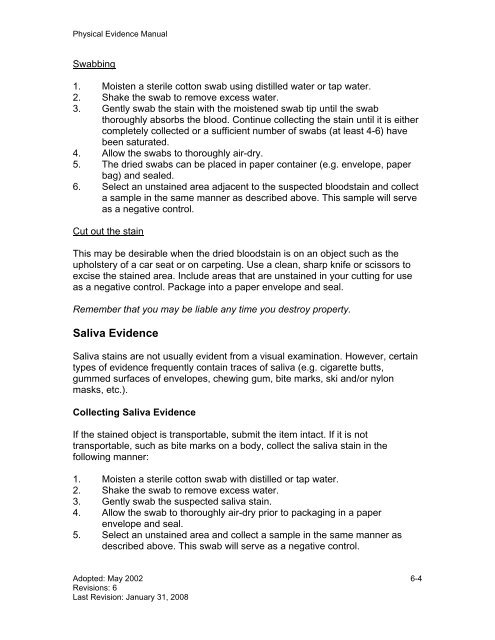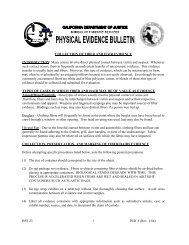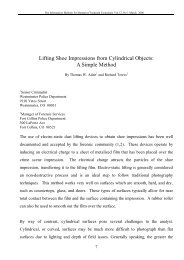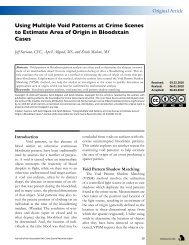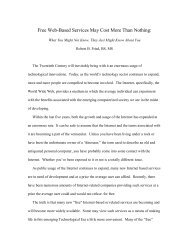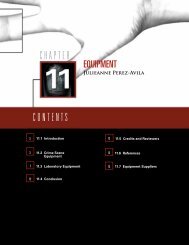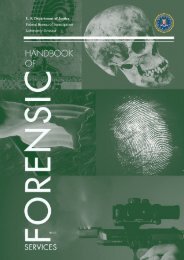PHYSICAL EVIDENCE MANUAL - Crime Scene Investigator Network
PHYSICAL EVIDENCE MANUAL - Crime Scene Investigator Network
PHYSICAL EVIDENCE MANUAL - Crime Scene Investigator Network
You also want an ePaper? Increase the reach of your titles
YUMPU automatically turns print PDFs into web optimized ePapers that Google loves.
Physical Evidence Manual<br />
Swabbing<br />
1. Moisten a sterile cotton swab using distilled water or tap water.<br />
2. Shake the swab to remove excess water.<br />
3. Gently swab the stain with the moistened swab tip until the swab<br />
thoroughly absorbs the blood. Continue collecting the stain until it is either<br />
completely collected or a sufficient number of swabs (at least 4-6) have<br />
been saturated.<br />
4. Allow the swabs to thoroughly air-dry.<br />
5. The dried swabs can be placed in paper container (e.g. envelope, paper<br />
bag) and sealed.<br />
6. Select an unstained area adjacent to the suspected bloodstain and collect<br />
a sample in the same manner as described above. This sample will serve<br />
as a negative control.<br />
Cut out the stain<br />
This may be desirable when the dried bloodstain is on an object such as the<br />
upholstery of a car seat or on carpeting. Use a clean, sharp knife or scissors to<br />
excise the stained area. Include areas that are unstained in your cutting for use<br />
as a negative control. Package into a paper envelope and seal.<br />
Remember that you may be liable any time you destroy property.<br />
Saliva Evidence<br />
Saliva stains are not usually evident from a visual examination. However, certain<br />
types of evidence frequently contain traces of saliva (e.g. cigarette butts,<br />
gummed surfaces of envelopes, chewing gum, bite marks, ski and/or nylon<br />
masks, etc.).<br />
Collecting Saliva Evidence<br />
If the stained object is transportable, submit the item intact. If it is not<br />
transportable, such as bite marks on a body, collect the saliva stain in the<br />
following manner:<br />
1. Moisten a sterile cotton swab with distilled or tap water.<br />
2. Shake the swab to remove excess water.<br />
3. Gently swab the suspected saliva stain.<br />
4. Allow the swab to thoroughly air-dry prior to packaging in a paper<br />
envelope and seal.<br />
5. Select an unstained area and collect a sample in the same manner as<br />
described above. This swab will serve as a negative control.<br />
Adopted: May 2002<br />
Revisions: 6<br />
Last Revision: January 31, 2008<br />
6-4


